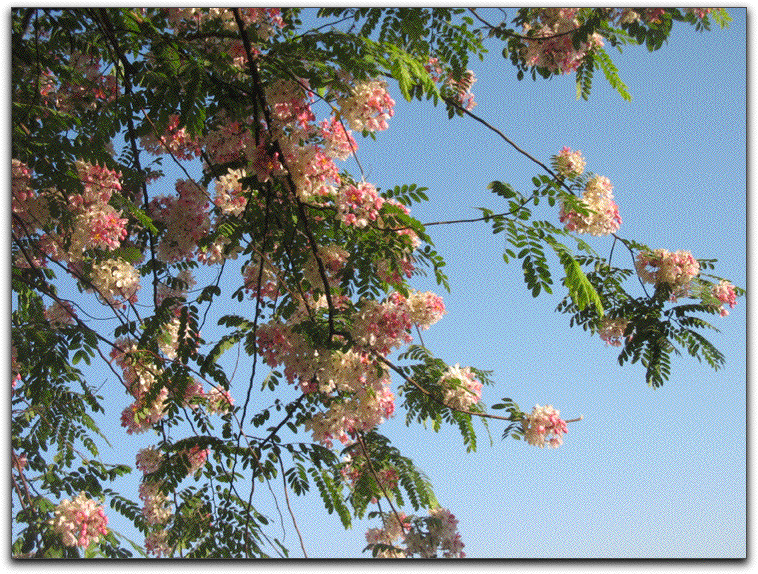
Another beautiful sunny day in Upper Egypt.

“Luxor” comes from the Arabic for city of palaces. (Does the word luxurious come from Luxor?)
We are so used to speaking of the “West Bank” in reference to the Jordan river and its great political significance for Israel; today we learned that the West Bank of the Nile represented the dark/death side for ancient Egyptians. The sun setting on this side of the river led to the custom of locating all tombs and funerary temples for the mummification of Pharaohs on the “West Bank.” Each class had its own separate valley—a valley of the nobles (410 tombs), and of the workers.
We passed fields of the main crop in the area, sugar cane, irrigated by many canals off the Nile. The flood plain here extends 25 kilometers from mountain range to mountain range.
Travelers used to cross to the West side by ferry and then motor boat. We took a van across the bridge to learn about the period of 1500-332 BCE.
Ancient Egyptians believed in resurrection because they watched the sun rising each day, they watched the Nile overflow and recede, they watched crops grow, die and grow again. They figured they could/should be able to do the same, according to our guide Ahmed. He studied four years after BA to become an Egyptologist and tour guide.
Mummification served as the only way to achieve this resurrection. The 3 levels of mummification depended on one’s status in life:
During the Old and Middle kingdom pyramids, such as those at Giza, sheltered burial sites. They functioned to bury the king and provide for his afterlife. The word pyramid, representing the journey to the afterlife, does not exist in Egyptian. It combines three hieroglyphics:
In the New Kingdom the desire to hide the tombs from grave robbers ended the pyramid tradition. Tutmoses I, father of Queen Hatshepsut, was the first not to use a pyramid. He asked his head architect to find a suitable, hidden place. After searching all over Egypt, he found this area between the mountains in Luxor. The limestone mountains can be cut, the dryness maintains the mummies, the flooding of the Nile cannot reach there, and tomb robbers cannot easily find it. At Luxor the tombs were dug under a natural pyramid of the mountain,
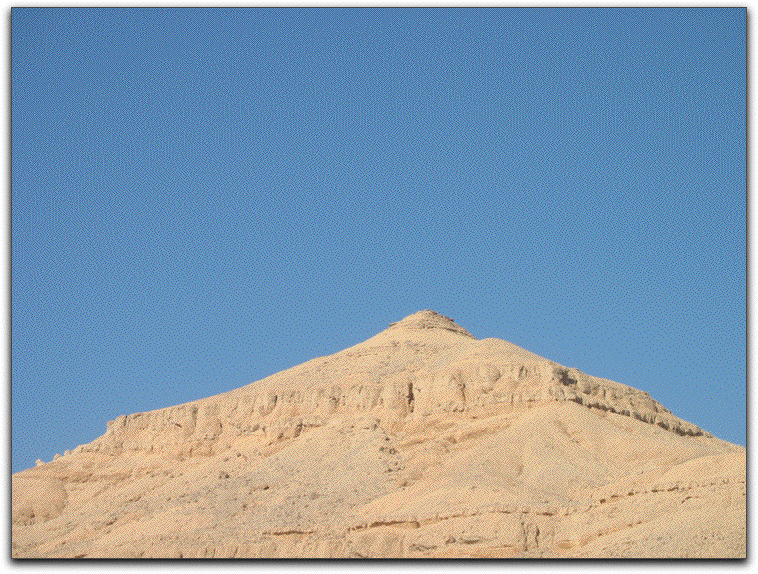
thus also maintaining the holy shape reaching to the skies. All tomb openings were covered with a large stone and then sand (see lower left corner, below).
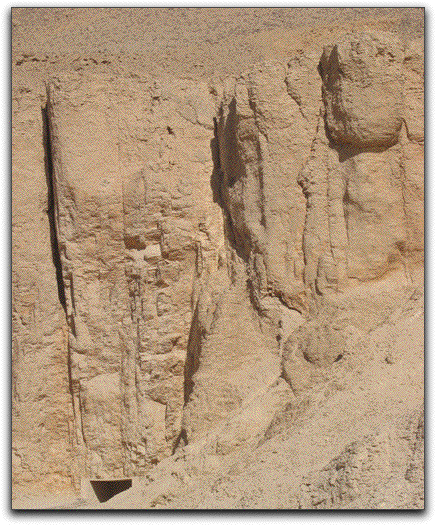
The kings following Tutmoses I did the same, leaving behind at least 63 known tombs in the Valley of the Kings. The most recent find was discovered about 11 months ago, with 7 wooden coffins, 28 canopic jars and 5 poorly preserved mummies. The previously found tomb was that of King Tut, the boy king, in 1922. Tut’s tomb was not robbed because the tomb of Ramses VI lies right above it. It remained unfinished inside because he died young. Privately financed by Lord Caernarbon, archaeologist Carter spent 5 years looking for the Tut tomb having found a papyrus which speaks of a golden boy in the Valley of the Kings. The Egypt Museum in Cairo exhibits the gold treasures. We saw them earlier in the week.
The reigns extended from Ramses II who ruled 67 years to the youngest of the Pharaohs, Tutmoses who ruled only 10 years. As Mark said, he died before his tomb. Nefertiti was married to Akhnaton, the monotheist, who believed only in Aton, the sun God, and ruled for 25 years.
However, we just read in EgyptAir’s in flight magazine that Queen Hatshepsut’s tomb was recently found and that the discovery of her mummy will be announced at the end of this month, June, 2007. Scientists cannot use x ray or sonar for exploration so they used robots in this excavation.
The first to find the tombs of the Pharaohs in the Valley of the Kings were the locals. They sold off many of the treasures. However, recently the government has begun to remove the housing there, relocating the residents.
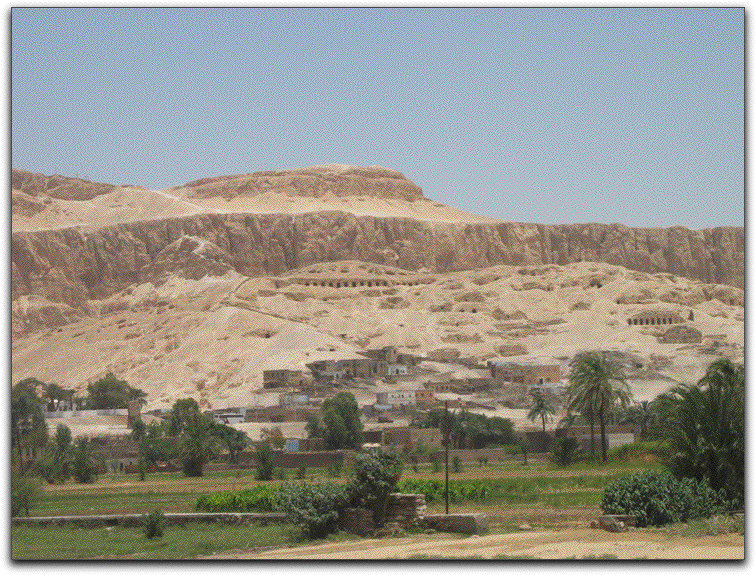
Several of the tombs are being restored. At this point only 12 tombs open to the public, that of Tut costing an additional admission fee. However, because it is unfinished (and most of its contents in the museum in Cairo), it is perhaps one of the least interesting to see.
The tomb of Ramses II (often thought to be the Pharaoh of the Exodus period) was the biggest because he lived 67 years, allowing plenty of time to do a lot of work on it. The tomb of Nefertary may be the most beautiful. Closed for restoration at this point, it admits only a limited number of people inside at a time.
Some tombs extended on one level, some ascend or descend a bit, one veers off to the side. 120 male workers constructed each tomb (though not all at once) including carvers, plasterers, artists, painters and more. They used iron tools, animal fat oil with salt to keep smoke of the torches from turning everything black. Tomb construction began as soon as a Pharaoh ascended to power.
At the entrance to the Valley of the Kings, a three dimensional (translucent plastic) model of the Valley explains the topography and the location of the tombs. The photo is from underneath.
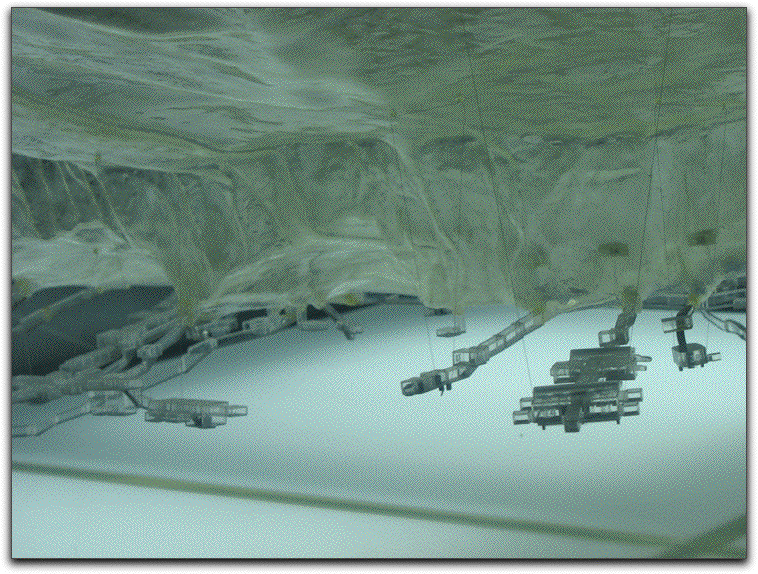
The interior design of the tombs was pretty standard:
The high priest headed the tomb creation and decoration. The Pharaoh was not able to see the tomb at all. Since the High Priest knew the mistakes of the Pharaoh, he oversaw the appropriate personalized inscriptions. For instance, the ornamentation for Ramses IX, thought to be an evil ruler, included 9 snakes and images of bad spirits.
We visited the tombs of Ramses III, Ramses IX and Ramses IV. We were very impressed with the amount of color remaining in the tombs, the stars in the indigo ceilings, the depictions of Nut swallowing the sun, the amulet of falcon wings and sun disk (which we saw and were able to photograph elsewhere).
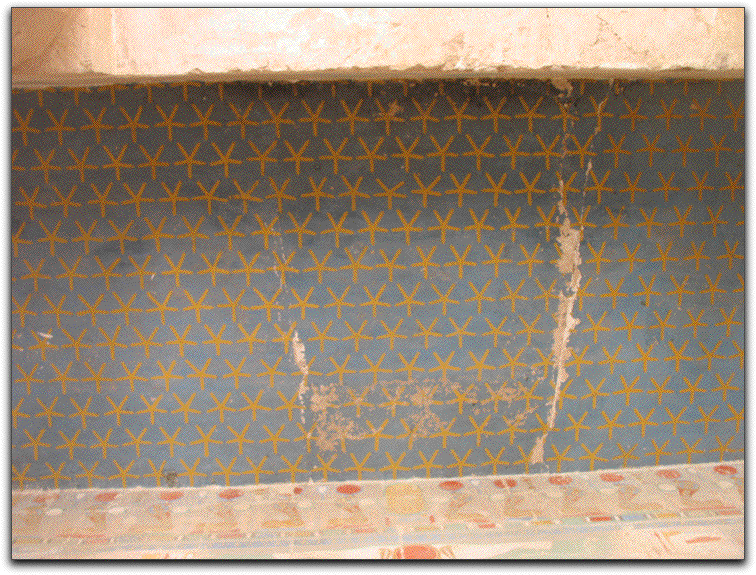
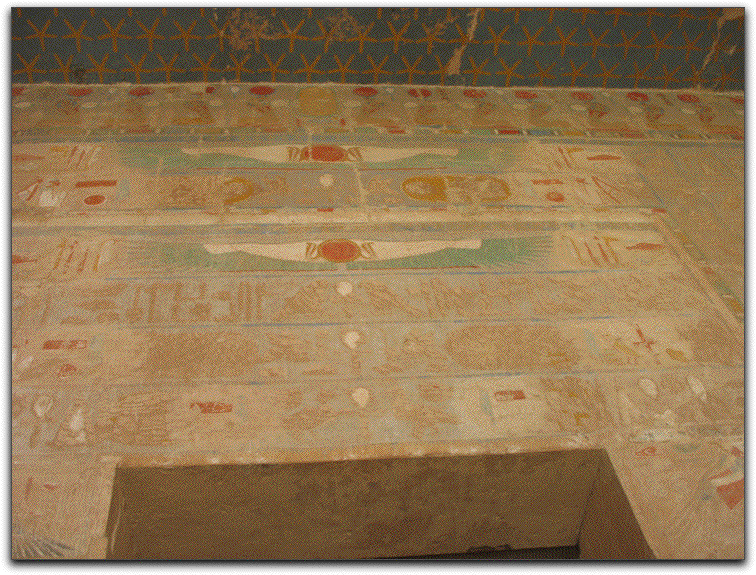
At the tomb of Ramses IV we could saw evidence that early Christians (Copts) hid from the Roman persecutions in the 4th century, leaving behind Coptic graffiti.
Interlude
We few English speakers were not the only people cruising down the Nile on the Sonesta Moon Goddess. A group of about a hundred Equadorans from a parish in Quito were there with their priest. Given the language barrier we did not have much contact. However, late in the evening, when the boat organized its own programming we were all together. One night as we were all dancing Mark began dancing with one of “their” women. The two of them became the hit of the moment. Then, a few minutes later during an ice breaker where you need to dance until the MC stops the music and calls out a number (the aount of which you need to quickly grab in a hug) Mark was grabbed by another of the Equadorians.
The next day, while “shopping” for more alabaster, we encountered the group in the same shop. Mark posed for a photo with the women. (That's the dancer on Mark’s right and the grabber on his left.)
It contains 48 known tombs of queens and their children. Most of them are very small, and contain shafts where the queens were lowered, i.e., “They were shafted.”
Nearby we saw the caves where workers on the tombs were buried.
At the tomb of Amenkhopshef, who died at the age of 9 years, lies the mummy of a fetus, his brother, who was stillborn.
We visited the Temple of Queen Hatshepsut, the only temple with three open terraces. Just outside the entrance we noted a display of a tree trunk from thousands of years ago.
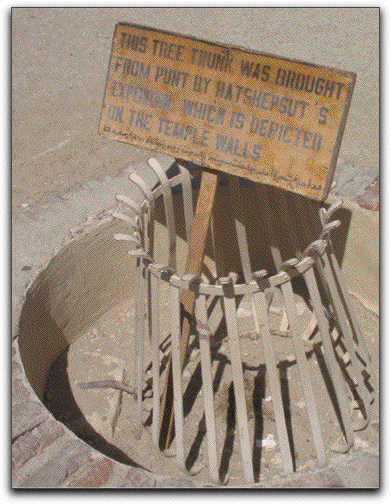
There, our guide, Ahmed Abd ElHamid explained what we saw.
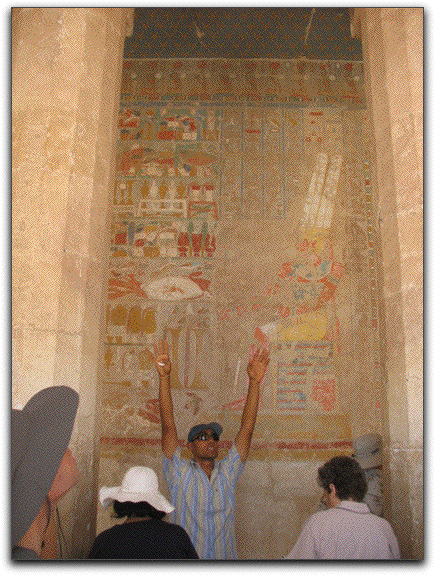
The temple area contained the Pharaoh’s palace, the worship areas and the central holy of holies for offerings to the gods. Hatshepsut married her half brother Tutmoses II to keep the royal blood in the same family. Their son, Tutmoses III, was her step son from another of Tutmoses II’s wives. The step son was only three when Tutmoses II died so she co-reigned with him. Many cartouches show the two signatures. She tired of that but as a woman she could not become Pharoah. So she disguised herself as a man. At the suggestion of the High Priest, she told the people a story of her divine birth as a man, wore a false beard, dressed in male military garb and forgot all about the step son. She sent him off to school in Aswan. The Temple structure contains the inscription of this story. Her tomb is at the Valley of the Kings. (This photo is from the second terrace of Hatshepsut’s temple looking east across the Nile river valley.)
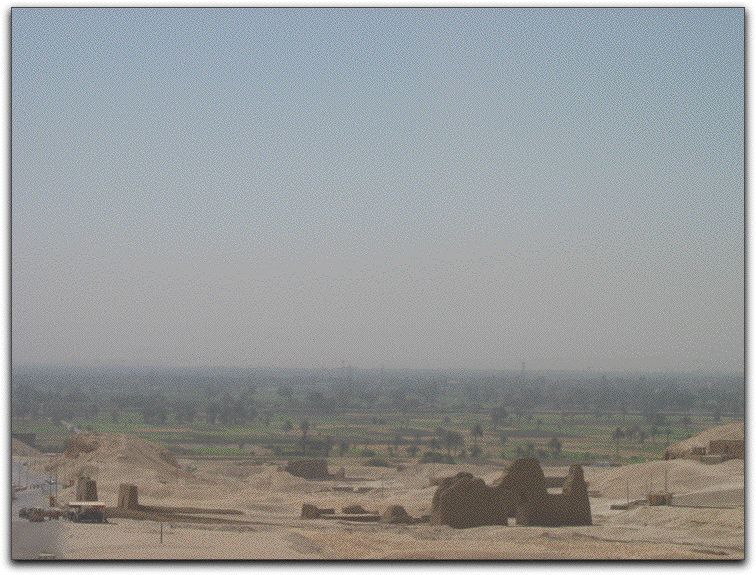
The most serious terrorist event in modern Egyptian history happened here in November of 1997.
To solidify her power she had the high priest killed, after all he knew the true story. When her boyfriend started to add his name to the cartouche, expecting that they would marry, she had him killed too. Her reign opened a lot of import and export business, especially a lot of trade with the Somali coast in kohl, ivory, silver and gold. It was a primarily peaceful 18 year period of Egyptian history. Her Temple has been reconstructed over 40 years—35% is original and 65% not. Restorers cannot add color; they can only clean and brighten existing colors. The middle platform contains a chapel of Annubis, the third platform a chapel of Amon Ra in black granite.
However when Tut grew older he killed his stepmother Hatshepsut when she was 35 so he could finally become king, destroying everything and anything that recalled her rule. Often he placed his own image over hers. However he could not destroy the images inside the holy temple. While rulers could not enter their tombs, they could go to their temples for ritual purposes indeed, to the holy of holies, along with the high priest. The temple would later become the location for the mummification rites.
Along the road back to the boat for lunch we saw many little booths in the fields. One might think that these are the kinds of booths that our Ancient Israelite ancestors dwelt in during their many years “wandering” in the Sinai. However, the material of which these are made in completely unavailable in the Sinai.
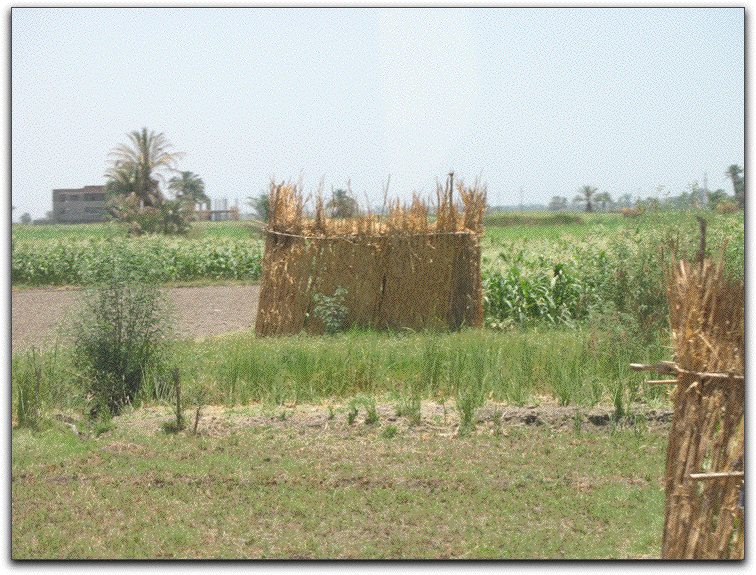
Amenhotep III of the 18th dynasty created this Temple with two statues guarding it.
An earthquake destroyed the entire Temple in 27 BCE. This is not an unheard of event, as this is part of the Great Rift Valley which extends from Anatolia to Lake Victoria.
The walls of 40 meters high were built without cranes. Here we could see the mud brick ramps used to reach the top and then create the decorations as the ramp height was lowered.
We became familiarized with the cartouche of Ramses.
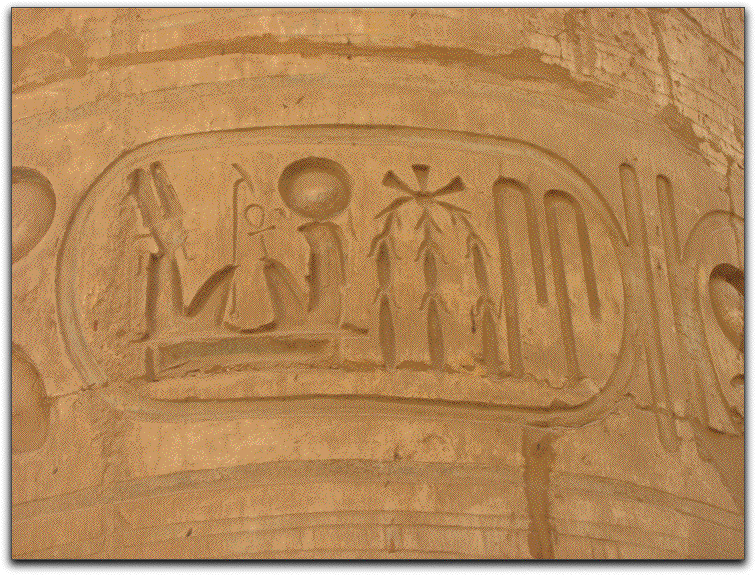
Statues of kings often showed left leg forward while they were alive and the right leg forward when dead. A straight beard meant the Pharaoh was alive, a twisted beard, dead.
Dung beetles, scarabs, have no male or female sexual parts, recreate from themselves in the dung, thus becoming a symbol of fertility and immortality.
And, while discussing dead and live kings and sexual parts, we came to recognize the difference between the one-armed and one-legged pharaoh (on the left, below) and the normal one.

The statue of Ramses II portrays his best queen, Nefertary smaller and between his knees.
Beautiful capitals of open and closed papyri.
Obelisk of 225 tons of granite floated down the Nile from Aswan. Its top had been covered in gold and silver so people could see the rays of the sun from far away and know the Temple’s location.
The Sphinx Avenue of 3 kilometers connects the Karnak temple to the one called Luxor Temple.
The ancient gods were thought to see and smell the offerings but not eat them. A special door at the back of the Holy of Holies allowed for the high priest to remove the offering to store them in the back rooms.
The large purification lake where holy perfumes added for use by the priests.
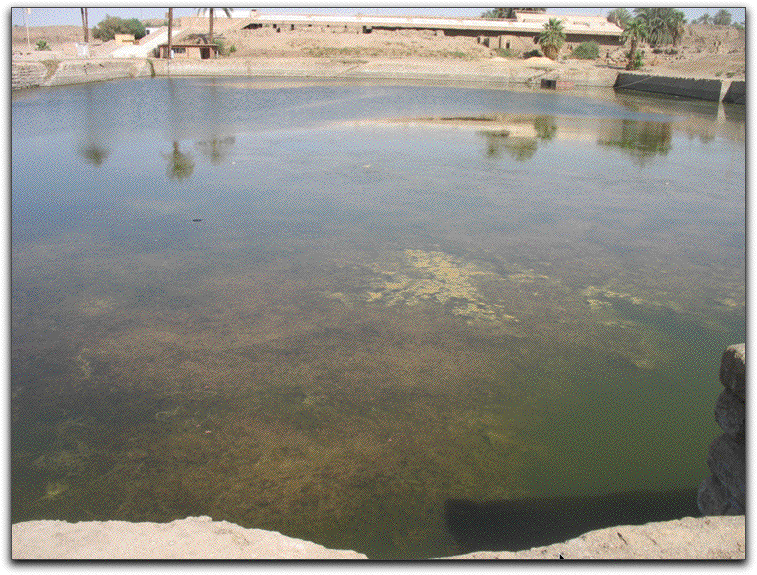
We learned the logistics of raising an obelisk; initially the large stone floated up the Nile from Aswan. Then it was laid horizontally on top of a structure with sand in it. As the sand was let out of the structure the obelisk slowly became vertical.
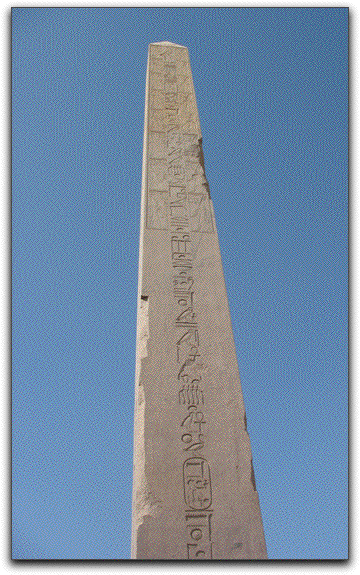
We paused for a group photo in honor of the moment. (The envelopes are from the Cairo Sheraton and the Sonesta Moon Goddess. Bill knew an appropriate answer: “Abba Dabba Do” which is based on the question: “What do you get when you track an abba dabba?”)
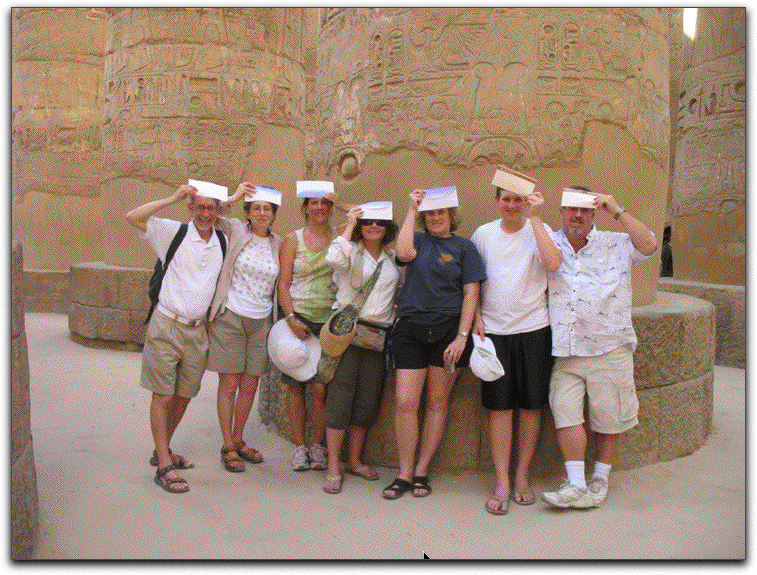
The first time an ancient Egyptian Temple, a mosque and a church share the same site.
Because the Luxor Temple had been buried in the ground until 700 years ago. The mosque exit was shifted to maintain its location. In 305 the Romans destroyed the columns, added frescoes and then adapted the space as Coptic church.
Along one of the entries were carvings of Semite (Asian) enemies (first) and names of African countries.
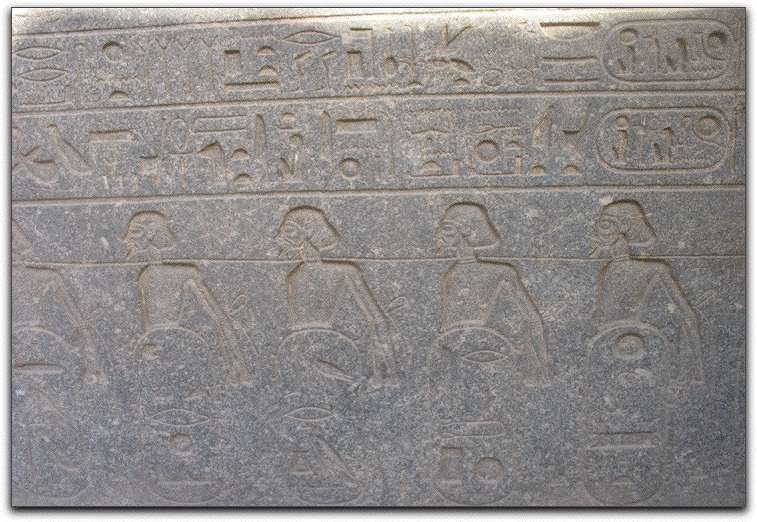
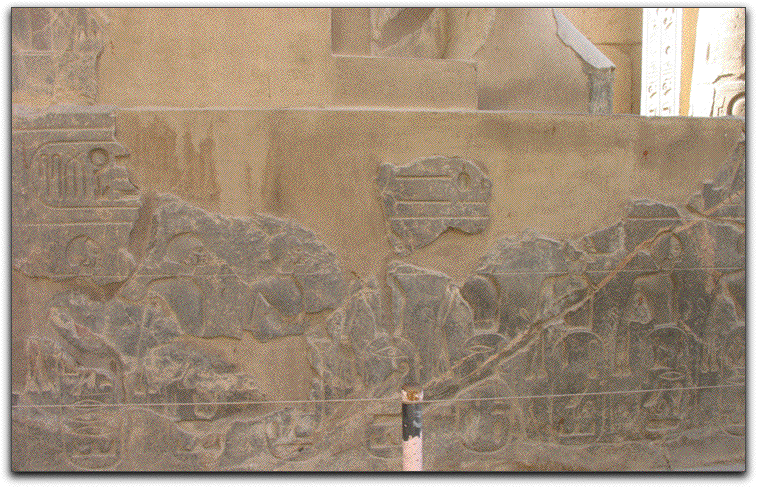
They are identifiable from their facial characteristics and their hair.
The second open court featured 64 columns with reeded papyrus tied together at the top.
12 columns with roof which had 12 holes open to sky to that that would be open one per month as a calendar
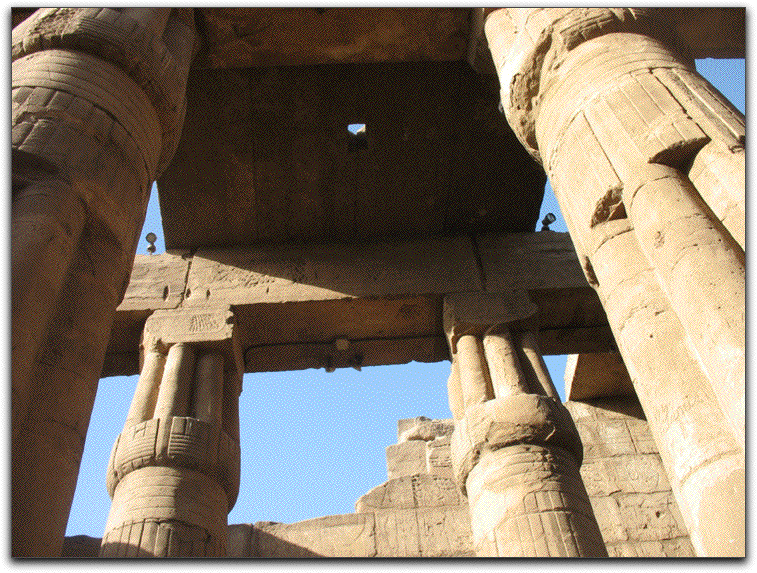
While most of the group headed back to the boat to relax, a few of us were dropped off at the Winter Garden hotel where we found a lovely spot in the back garden for mint tea. There Debbie "showed off" with her "magic" trick of lifting a glass of tea with its saucer.
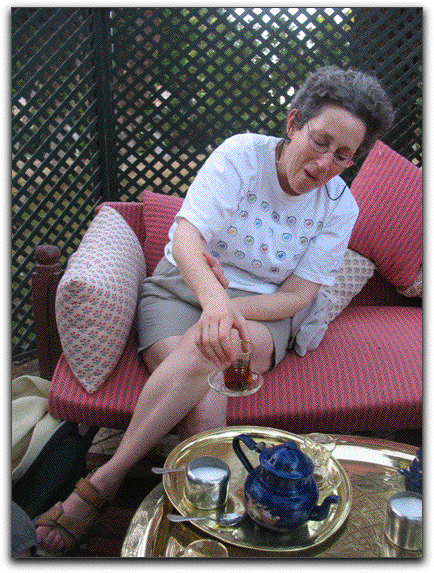
It was truly an amazing day.
By Deborah Prinz (additional info by MH)
